Ankle compression socks have gained popularity in recent years, particularly among athletes, travelers, and individuals with medical conditions. These specialized socks provide various benefits, including improved comfort, reduced swelling, and enhanced recovery. As awareness of their advantages grows, more people are turning to ankle compression socks for support during daily activities. This article will explore the benefits of ankle compression socks, how they work, and tips for choosing the right pair for your needs.
What Are Compression Socks?
Compression socks are specially designed garments that apply pressure to your legs and feet. They help improve blood flow, reduce swelling, and support overall foot health. These socks come in various styles and serve different purposes, making them widely used in both medical and athletic fields.
Types of Compression Socks
Compression socks come in several types based on their purpose and design.
- Knee-High Compression Socks: These cover the leg up to the knee. They are often used for improving blood circulation and preventing swelling in the lower leg.
- Thigh-High Compression Socks: These extend to the thigh and are commonly used for serious circulation issues.
- Pantyhose Compression Socks: These cover both legs and the waist, typically used for full-body compression support.
- Ankle Compression Socks: Targeting the foot and ankle area, these are perfect for light compression and everyday activities.
Each type serves distinct needs, making it essential to choose the right one for your circumstances.
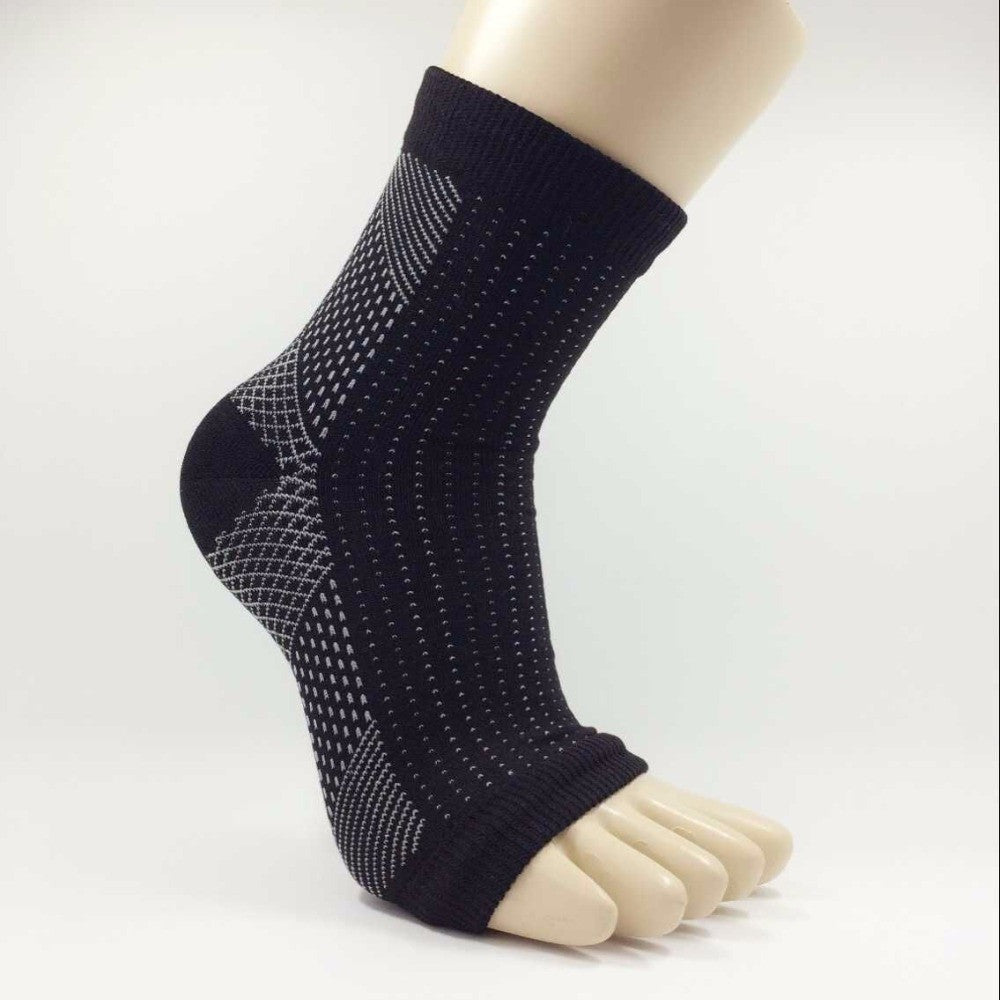
Ankle Compression Socks vs. Regular Socks
Ankle compression socks and regular socks might look similar, but they differ significantly in function.
- Enhanced Support: Ankle compression socks provide targeted pressure around your ankle to promote circulation and reduce swelling. Regular socks do not offer this benefit.
- Durability: Compression socks are made with durable, elastic materials designed to maintain their pressure level, unlike standard socks.
- Specific Applications: Ankle compression socks are wearable during physical activities, medical use, or even while traveling, while regular socks are mainly for comfort and warmth.
These differences highlight why ankle compression socks are so beneficial for health and performance.
How Do Compression Socks Work?
Compression socks work by applying graduated pressure to the legs and feet. This pressure helps boost blood circulation and prevents swelling. They are designed to support veins and reduce the pooling of blood in lower extremities, which can lead to discomfort or serious health issues.
The Science Behind Compression Technology
Compression socks use graduated pressure that is tighter at the ankle and looser higher up. This design helps push blood upward towards the heart, improving overall circulation. By compressing surface veins, arteries, and muscles, they enhance blood flow and promote oxygen delivery to tissues.
Compression also reduces venous pressure and prevents the build-up of excess fluid. This makes them effective for reducing swelling, known as edema, and easing discomfort caused by poor circulation. The science is backed by years of medical research and proven benefits in various applications.
Pressure Levels and Their Impact
Compression socks are available in different pressure levels, measured in mmHg (millimeters of mercury).
- Mild Compression (8–15 mmHg): Best for daily use, travel, and minor swelling.
- Moderate Compression (15–20 mmHg): Suitable for minor varicose veins and better blood flow.
- Firm Compression (20–30 mmHg): Recommended for medical conditions like deep vein thrombosis or chronic venous insufficiency.
- Extra Firm Compression (30–40 mmHg and higher): Used for severe medical issues and under medical guidance.
Choosing the right pressure level depends on your specific needs. Always consult a healthcare professional for high-pressure socks.
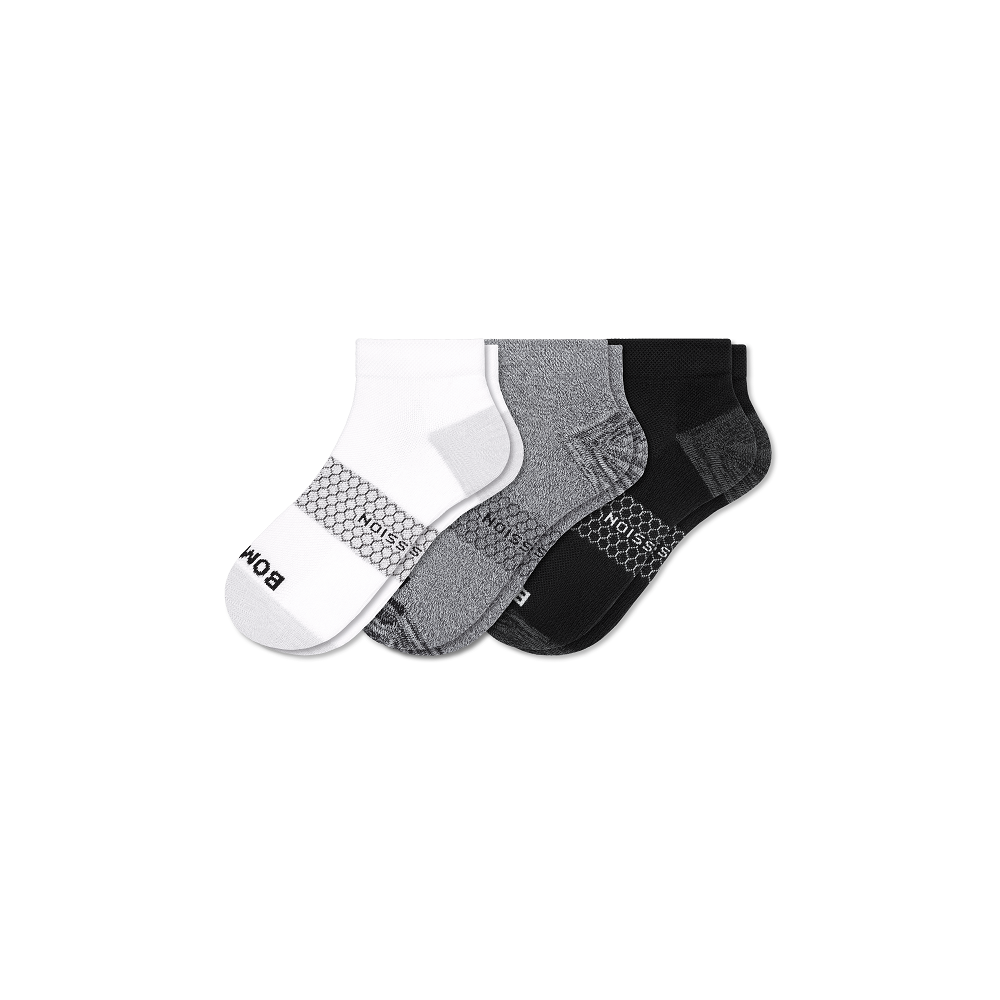
Benefits of Ankle Compression Sock
Improved Blood Circulation
Ankle compression socks boost blood flow by applying gentle, graduated pressure. This pressure pushes blood upward, preventing it from pooling in your lower legs. Improved circulation reduces fatigue and helps your body transport oxygen efficiently. For individuals with circulation problems, these socks can significantly enhance leg and foot comfort.
Reduced Swelling and Inflammation
Swelling often occurs due to fluid build-up or poor circulation in the lower extremities. Ankle compression socks help reduce swelling by applying consistent pressure. This prevents fluid retention and controls inflammation in the ankles and feet. They are particularly helpful for those who stand or sit for long hours daily.
Enhanced Athletic Performance and Recovery
Athletes benefit greatly from ankle compression socks. These socks enhance blood flow, supplying muscles with more oxygen for better performance. After workouts, they aid recovery by reducing muscle soreness and inflammation. Many athletes use them to maintain energy levels during physical activities and speed up recovery afterward.
Relief for Plantar Fasciitis and Foot Pain
Ankle compression socks provide targeted support around the arch and heel area. This alleviates pain caused by plantar fasciitis and other foot conditions. The gentle compression also reduces discomfort from prolonged standing or walking. For individuals with chronic foot pain, these socks offer a simple, effective solution.
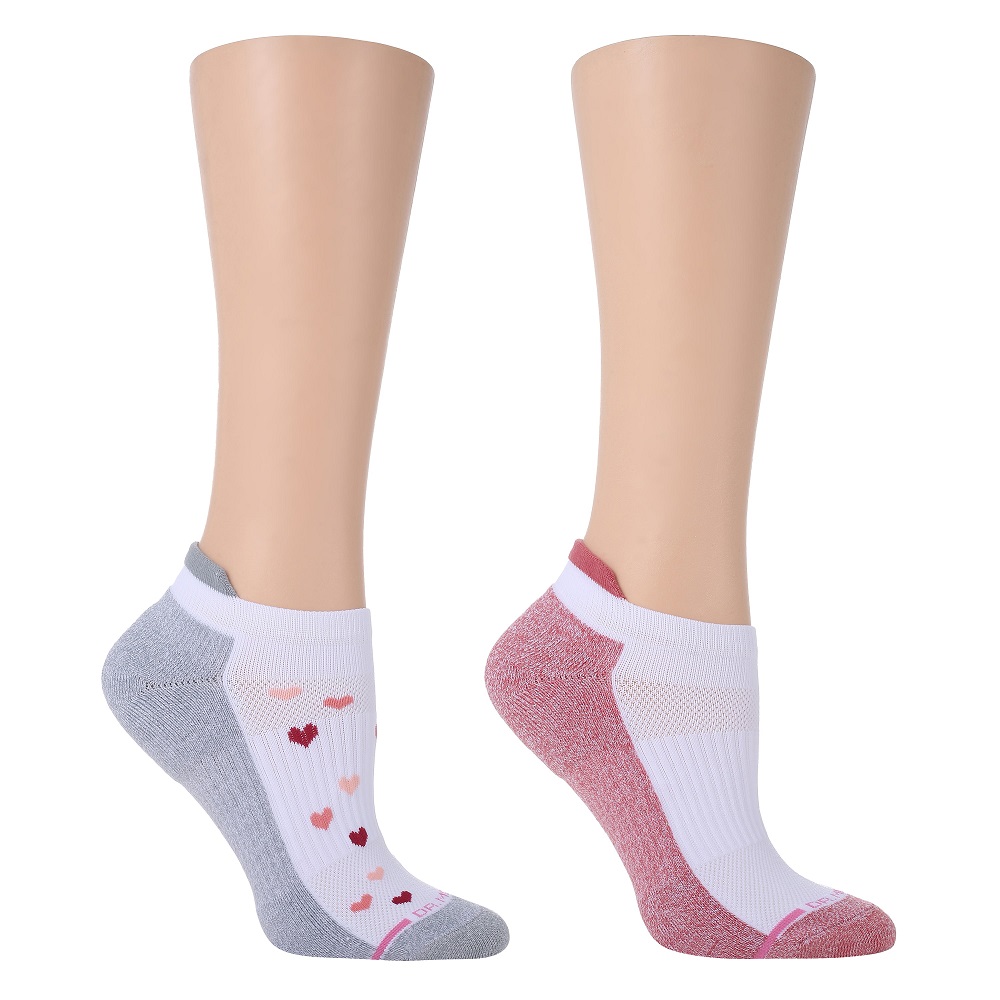
Who Should Wear Ankle Compression Socks?
Ankle compression socks are designed for a variety of people with different needs. They provide support for those seeking improved circulation, reduced swelling, and enhanced comfort during daily activities.
Athletes and Sports Enthusiasts
Athletes and active individuals often benefit from ankle compression socks. These socks enhance blood flow, delivering oxygen to muscles during physical activities. They also reduce muscle fatigue and prevent soreness. After workouts, the compression accelerates muscle recovery, allowing athletes to perform better the next day. Whether you’re a runner, cyclist, or gym enthusiast, ankle compression socks can boost your athletic performance and recovery.
People with Medical Conditions
People with medical conditions affecting circulation, such as varicose veins, plantar fasciitis, or diabetes, can benefit greatly from ankle compression socks. These socks help alleviate swelling, reduce foot pain, and improve overall foot health. For individuals with conditions like deep vein thrombosis, compression socks can even provide vital medical support. Consult a healthcare provider before using them for severe conditions.
Travelers and Office Workers
Those who sit or stand for long periods, like office workers or travelers, often experience swollen and tired feet. Ankle compression socks prevent fluid build-up and improve circulation. They are especially useful during long flights or daily commutes. Wearing these socks can reduce discomfort and keep your feet feeling lighter and healthier throughout the day.
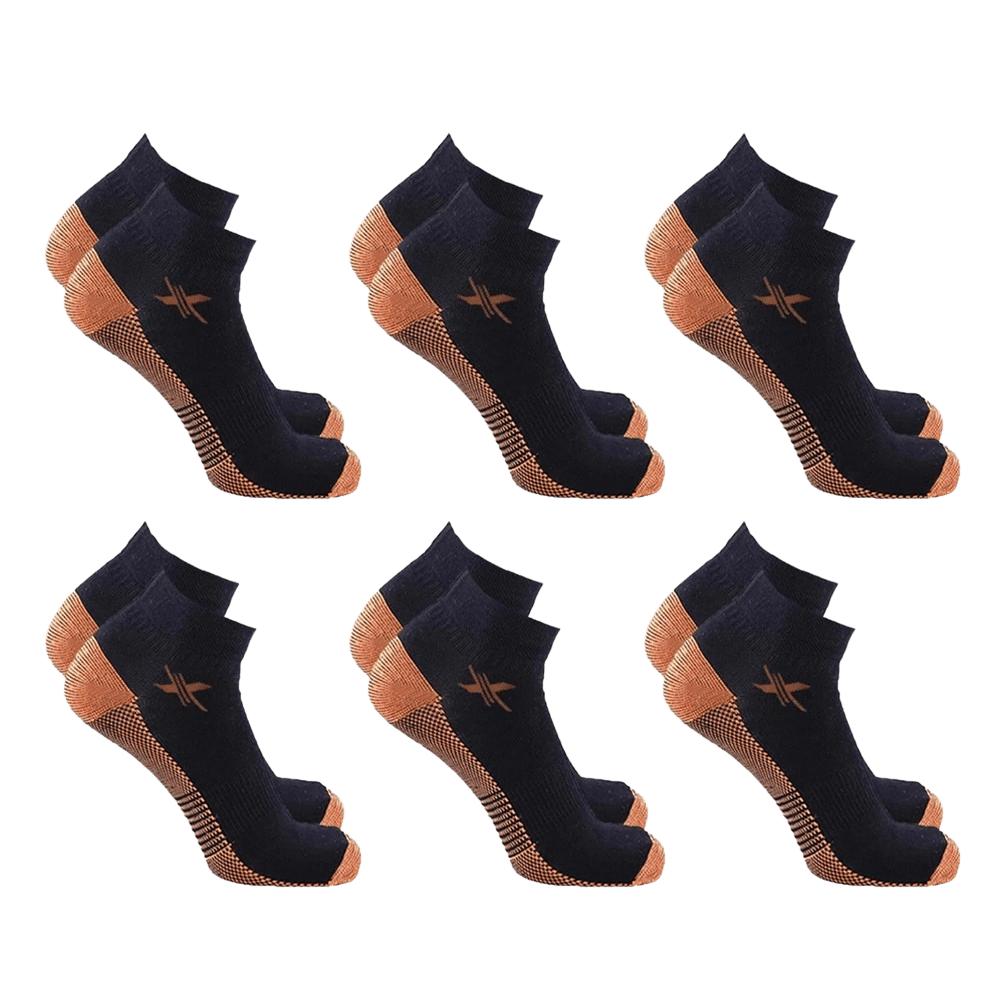
Tips for Choosing the Right Compression Socks
When choosing ankle compression socks, several factors ensure effectiveness and comfort. Picking the right socks involves proper fit, material selection, and durability assessment. Making the right choice maximizes health benefits and extends sock life.
How to Measure for the Perfect Fit
Selecting compression socks starts with the perfect fit for your legs and feet.
- Measure Your Feet and Ankles: Use a measuring tape to determine the circumference of your ankle and foot. Accurate measurements ensure optimal compression.
- Check Sock Length: Choose socks that cover the target area—ankle socks focus on the foot and ankle area.
- Understand Pressure Levels: Pick the right pressure level (measured in mmHg) based on your specific health need. Mild pressure suffices for daily use, while higher levels suit medical conditions. Consult a healthcare professional if necessary.
- Try Several Sizes: If unsure, test various sizes to find the one offering the best support and comfort.
Proper fit avoids issues like discomfort or reduced effectiveness, ensuring the socks serve their purpose.
Material and Durability Considerations
The material and durability of compression socks are critical for long-term usage.
- Material Types: Compression socks often use materials like nylon, spandex, and cotton. Opt for breathable fabrics for all-day comfort. Moisture-wicking materials prevent sweat buildup and keep socks dry.
- Elasticity: Look for durable elastic fibers that maintain consistent pressure even after frequent use. High-quality socks don’t stretch out quickly.
- Seam Construction: Choose socks with seamless designs to prevent irritation, especially during physical activities.
- Maintenance Needs: Pick socks that are easy to wash without losing elasticity or softness.
- Purpose-Built Designs: Ensure socks accommodate your lifestyle, whether for sports, medical support, or daily wear.
Investing in high-quality ankle compression socks ensures comfort, durability, and effective results for improved circulation and reduced swelling.
How to Use and Maintain Compression Socks
Compression socks provide optimal benefits when worn correctly and maintained properly. Following guidelines ensures their effectiveness and longevity.
Proper Way to Wear Them
- Start with Clean, Dry Skin: Always wear compression socks on clean and dry feet and legs.
- Position Them Carefully: Start at the toes, then roll the socks upward smoothly without twisting.
- Align Properly: Check to make sure the heel pocket aligns perfectly with your heel.
- Avoid Wrinkles: Ensure the socks fit smoothly to prevent discomfort and reduced effectiveness.
- Choose the Right Time: Wear them in the morning when swelling is minimal for maximum benefits.
- Limit Wear Duration: If wearing all day, remove socks before bed, unless prescribed otherwise by a doctor.
Washing and Care Instructions
To keep compression socks effective and durable, proper washing and care are essential:
- Wash Regularly: Clean your socks after each wear to maintain elasticity and hygiene.
- Use Gentle Detergent: Mild soaps or detergents work best to preserve fabric quality.
- Avoid High Heat: Wash in cold water and air-dry to avoid damaging elastic fibers.
- Skip Bleach: Avoid harsh chemicals like bleach that can weaken the material.
- Hand Wash Preferred: Gentle hand washing preserves compression and extends the socks’ lifespan.
- Inspect Often: Check for wear and tear such as thinning or loose elasticity to replace them as needed.
Proper usage and maintenance ensure ankle compression socks provide lasting benefits for foot health and comfort.
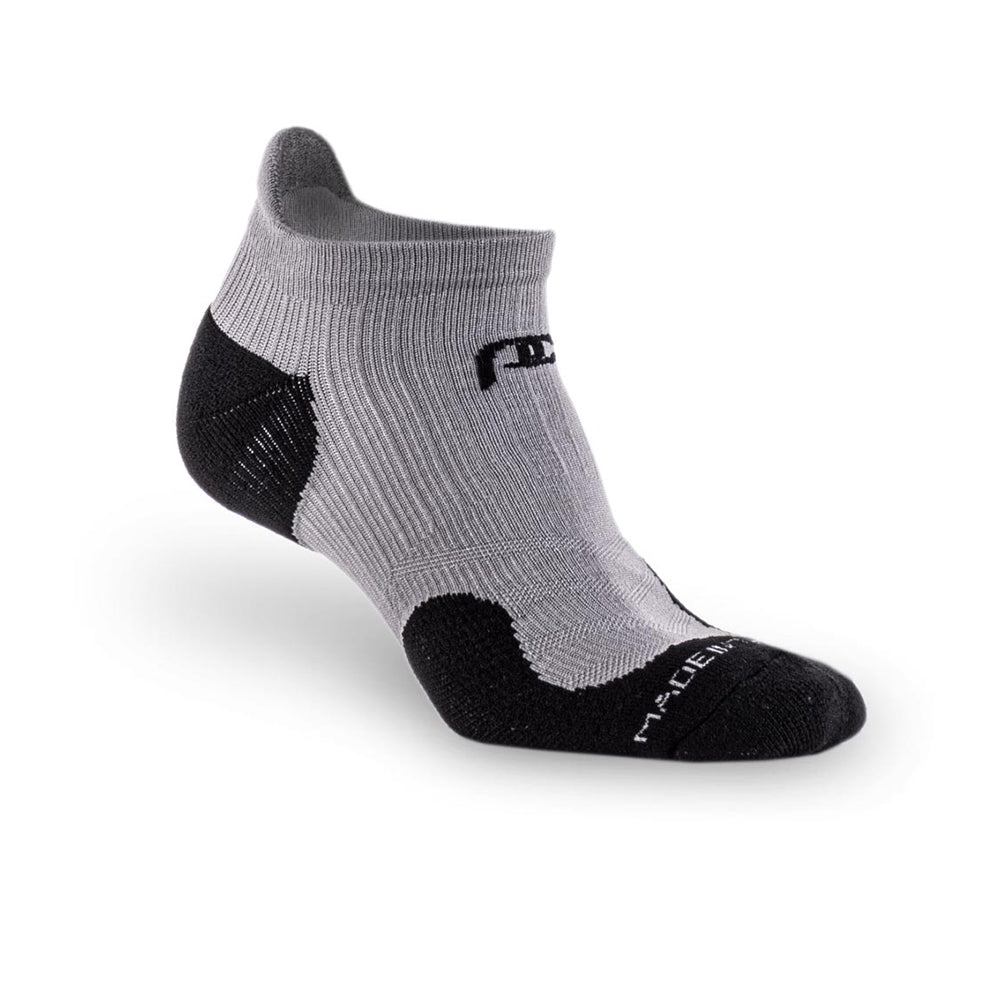
Common Misconceptions About Compression Socks
Compression socks are misunderstood by many due to common myths. Clearing misconceptions helps users understand their true benefits.
Are They Only for Older Adults?
Many think these socks are solely designed for older adults. However, this is untrue. Compression socks suit a wide range of people, including athletes and office workers. They improve blood circulation, reduce swelling, and support active lifestyles. Young individuals benefit during physical activities, long travels, or prolonged sitting. Their applications extend far beyond age-specific use.
Do They Replace Medical Treatment?
Compression socks support foot health but do not replace medical treatments. On their own, they ease symptoms like swelling and pain. However, for severe medical issues like deep vein thrombosis, they are part of a comprehensive care plan. Consult a healthcare provider before using them as a substitute for treatment. Combining compression socks with medical advice ensures safe and effective results.
Exploring Advanced Features
Technology in Compression Socks
Recent advancements in technology have led to the development of enhanced features in ankle compression socks. Some brands incorporate graduated compression with targeted zones, offering more support where it’s needed most. You may find socks with moisture-wicking properties, which help keep your feet dry during physical activities. Others might include antimicrobial treatments to minimize odor. When selecting your compression socks, consider these technological features to maximize comfort and hygiene, especially if you plan to wear them for extended periods.
Style Meets Functionality
While the functionality of ankle compression socks is essential, style shouldn’t be overlooked. Many manufacturers now offer fashionable designs that cater to a sense of style while maintaining the intended compression benefits. From colorful patterns to sleek lengths, you can easily find pairs that fit your personal aesthetic. This means you do not have to compromise on style for comfort. Stylish compression socks can be worn discreetly under clothing or showcased as part of your outfit, making them a versatile addition to your wardrobe.
Embrace the Benefits of Ankle Compression Sock
In conclusion, ankle compression socks are more than just a trend; they provide essential benefits for comfort and recovery during various activities. By ensuring the right fit, understanding the advantages of specific features, and embracing your style, you can fully enjoy what these socks offer. Whether you are an athlete seeking to enhance performance or someone wanting to improve comfort during daily routines, ankle compression socks can elevate your experience.
As you explore the world of ankle compression socks, remember that knowledge about sizing, materials, and styles is vital for making informed choices. Prioritizing comfort and support will empower you to take on daily challenges with confidence. Invest in a quality pair of ankle compression socks, and make them an integral part of your wardrobe. Their combination of function and fashion means you can enjoy the benefits while feeling stylish and ready for whatever the day has in store!